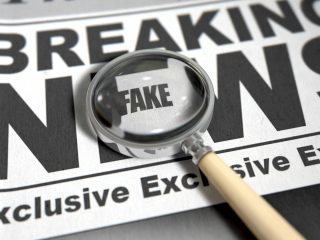Tackling and identifying fake news is an enormous challenge and one that all businesses should routinely do when creating new content or sharing content online. Only then can they retain legitimacy and create the intended impact of genuine stories. If organisations don’t deal with this problem, trust is quickly eroded. Following the five core tried and trusted journalistic principles is a good starting point: truth and accuracy is paramount, be an independent and unbiased voice, offer fair and impartial objectivity – reporting both sides of the story, respect the story’s focal point and remember that they are human, and accountability – if you make an error admit to it and retract the wrong statement/information. This last core principle is ironic in the case of fake news. So, how to first identify that the news you’re reading is fake?
Here are our five top tips for spotting fake news stories:
- Do your research. Do your due diligence on social media and news sites to find out background information about the story or the writer. If no other media outlets are covering the story, or it is only being covered by non-reputable news sites, the reason could be because it’s fake. Be aware that some news sites are purely satirical – for example The Daily Mash, The Poke, News Thump and News Biscuit are just some of the UK spoof news and satire sites online. There is actually even a ‘news’ site called bffn, which stands for British Fake News Network! Also recognise sources that are known, or have been known in the past, to be a bit shady and unreliable, and ignore anything shocking that they report on as the story is more than likely to be fake.
- Check URLs. Many fake stories imitate genuine stories albeit with a minor alteration of the URL. Comparing URLs will resolve this quickly.
- Read critically – the headline itself can be a sure giveaway. Only share and use stories which are genuinely credible.
- Check the evidence available. A lack of evidence and expert opinion is a sure sign that there may be a whiff of fakery in the story. PR professionals can play an important role in becoming fact checkers as well as their traditional role in s haping the news agenda.
- Any news story that predicts a future disaster or incident is not provable at this time so be careful about taking them too seriously, until after the forecasted date at least. Stories that reveal miracles, such as an easy cure for cancer or AIDS, should also be taken with a pinch of salt as most are simply not true.
By following these tips, audiences not only get more context about stories so they can make more informed decisions about what to read, what sources to trust and what to share, they also develop an investigative ability to identify fake news straight off.
‘A lie can travel around the world and back again while the truth is lacing up its boots’, a famous quote fromMark Twain. Unfortunately, it’s research has shown little evidence that Twain wrote this. There’s no record of it anywhere in his works. The fact checkers really do have their work cut out in the post-truth world.
To talk about tackling and identifying fake news and the challenge it may have on your business, please contact TechComms, a b2b tech marketing and communications agency on + 44 (0) 203 322 8928.




Leave a Reply